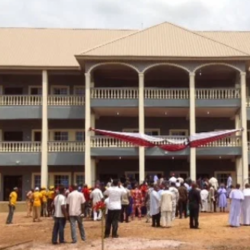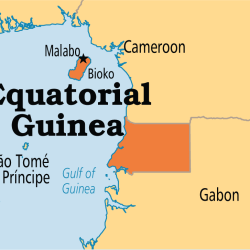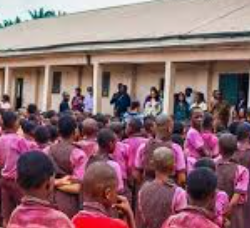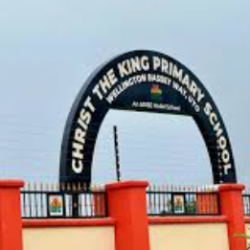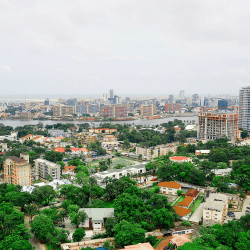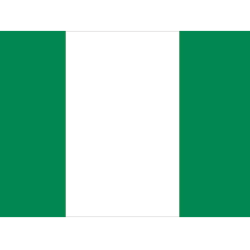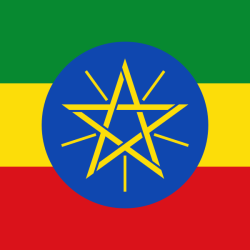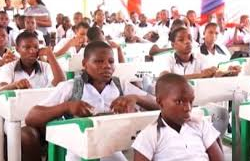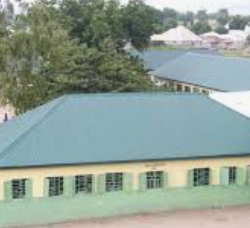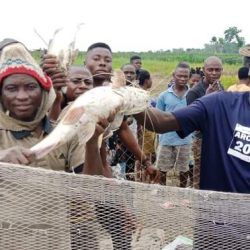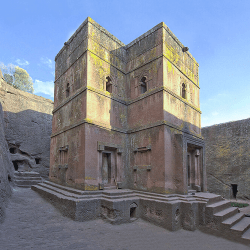Before the advent of Christianity, the inhabitants of Guinea were hunters and lived on fruit and foodstuff gathering, traces of which may still be found in Bonapa, an island of Bioko South of the capital Malabo. They may possibly have been part of the groups of migrant hunters and named dangymen who for centuries traded across the Sahara desert which was at the time new to African neolithies. Beautiful paintings and drawing which were left by civilizations of Northern Chad, Cameroon, Niger, Algeria, Libya and Mali can still be found on the sides of cliffs. Farmers and hunters of Northern Teheic in Niger settled around water points such as lakes, streams and rivers – they manufactured tools like axes, spears and haysticks with stones and bones.
BLOOMING CIVILIZATION
Mean time, great African civilizations like Egypt, (former Kouch empire) and Carthage were developing along the Nile River, North of Africa while in the South great Sub-Saharan empires such as Ghana, Mali or Kanem Bornu also developed. In most of Northern Africa and Egypt, our forefathers used carrriages on land and boats on the sea to travel from the Mediterranean basin in the North, to the Gulf of Guinea. It is widely believed that Pharaoh Nechara II of Egypt (609 BCE) made a journey by sea around Africa. He set off in East Africa, passed via cape of Good Hope, landed in West Africa and finally ended his journey at the Mediterranean seas.
HANNON’S TRIP
The most controversial section in the history of Equatorial Guinea is the famous “Journey of Hannon”. Hannon launched the Carthaginian army (V century BC) to a grand expedition. The army was made up of rowing boats with 30,000 men on board. Their prime objective was to create new colonies on the coast of Africa for Spain. These boats set off from Carthage (besides present day Tunisia), crossed the Mediterranean from East to West via Bibral far and the coasts of Morocco to the Gulf of Guinea. In water, they caught sight of the “Chariot of Gods” that is, Mount Cameroon.
“During our journey, at night we saw columnes of fire, in the middle, there was a much higher fire that seemed to touch the stars. It is only during the day that we discovered it was a high mountain known as the Chariot of Gods”. Then we went around the mountain and discovered a bay – a horn at the end of which was the island of Bioko”.
Yet, prominent historians like Frenchmen Mauny do not come to terms with the journey of Hannon. But if this is true, then it becomes difficult to come out with proofs of the existence of the inhabitants of Guinea during that period. However, recent discoveries by scientists have shown that the development of Africa was not homogeneous.
For instance, in Central Africa, the Neolithic golden age (the period when African discovered agriculture and poetry and settled) coincides with the first great Bantu migration. The Benoué Basin (In Northern Cameroon and Nigeria) served as the point of dispersion from which Bantus scattered to the whole of South Africa founding civilizations such as Zimbabwe among others – such Bantus migrations before Christianity marked the beginning of the Iron age for Black Africa.
IRON AGE
The inhabitants of Guinea inherited metal works techniques from the Kingdom of Kouch in Nubia. A sort of industrial revolution was developed around this metal from the V century BC. Endowed with iron, Black Africa did not go through the intermediary stages of Bronze and copper like Europe. Iron was the backbone of development in Africa for about a millennium. From the kingdom of Kouch the metal work technology filled parts of Africa such as Egypt, East Africa, South Africa and lake Chad. In this region, where Bantus are said to originate, archeologists discovered hundreds of piles of scoria from Blacksmiths and residues of metal works of local industries. These techniques continuously spread to West Africa along the Niger valley and the Gulf of Guinea; some traces can still be found in Northern Nigeria today.
It should be noted that as far back as Christianity, Bantus already passed metal work sills. With the help of these iron tools they quickly settled in the South and East of Africa imposing their life styles to the indigenes like the Pigmies and Hottentots.
FIELDS OF BIOKO
The largest field in the history of Equatorial Guinea was observed in Bioko (on island besides Molaba, West of the town of player carboneris) named after the coal depots set up by the English at the time when steam ships were still used.
These fields discovered in has the following four-step chronology.
Carbonear (v to x century BC)
Boloopi (x to xv century)
Buela (xv to xviii century)
Balombe (xix century)
In the second half of the first millennium, the inhabitants of the Carboneras island were farmers and fishermen. They lived along the costs and with their canoes they easily went for funny-fish and whale – fishing. In addition, they processed palm oil and planted yams.
THE FIRST EUROPEANS
The arrival of the first European navigators by the second-half of the xv century changed the life-style of the indigenes. When the Portuguese set out for the Gulf of Guinea, their prime concern was not to colonise Africa as they later did in the xviii and xix centuries. Rather, their aim was to set-up small wharehouses for potable water and fresh foodstuff collected from the indigenes in route to the Indies.
The great sea route expedition to the Indies launched by king Dom Jaâo I of Portugal (1385 to 1433). After the Arabs, the Portuguese launched a crusade against Morocco capturing the center in 1415. Such events reinforced the overseas expansionist policy of Portugal aimed at conquering the Muslim world. Moreover, their economic interest were to bring back home the prosperous sales of spices that had made the fortune of virus and Turkey, by quality getting to the East ** and new sea route round Africa.
At the beginning of the xv century, the Portuguese expansionist policy was limited to Morocco. In fact, their knowledge and skills as far as negotiations is concerned prevented them from sailing south of Conakry islands due to opposing winds and currents.
HENRI THE NAVIGATOR
A new impulse was brought to marine expeditions by Henri the Navigator (1394 to 1460), son of king Dom Joâo I of Portugal that changed the course of history. With a quasi – mystical urge, he devoted to this great expansionist project by opening the famous school of Navigation of Segres, in 1431, south of Portugal. Here one could find all the greatest Astronausts, cartographers, intellectuals, geographers travelers and engineers. They perfected the “Portutans” or marined cards of the Arab navigators, invented the steering wheel of Etombot, built a ship (the caravel) and made a better use of all the navigation instruments such as the compass (invented by the Chinese), the sextants and the astrolabe under the leadership of Henri the Navigator who himself did not take part in these expeditions. These Navigators in 1419 and Across in 1427. then in 1434 Gil Eanes for the first time successfully crossed cape of Bojador south of Morocco opening the gateway to black Africa. In 1444 it was the term of cape colonies and Senegal the following year. After the death of Henri in 1960, Pedro of Cintra landed in the Gulf of Guinea and Sierra Leone. After a short break, the Portuguese were back again with discoveries. Under the reign of Don Afonso V the African from 1438 – 1481, they built the port of EL Minor in 1471 on the coast of present day Ghana.
THE BEAUTIFUL ISLAND AND “GOOD YEAR”
That same year, the Portuguese of Joâo Santarem and Pedro Escobar crossed the equator and discovered the Annobon Island, meaning new year. T his Island bears this name because the first Portuguese landed here on a new year or “Anne bon”.
For the inhabitants of Equatorial Guinea the year 1472 is a very important year because it is in this year that the Portuguese Navigator Fernando poo discovered the Island of Bioko and named it “Ilha Formosa” meaning the beautiful Island. A few years later the name was changed to Fernando poo. It is the same year that Fernando poo caught sight of Mount Cameroon and entered Douala through the Wouri Estuary. Due to the great quantity of prawns in the Wouri, Fernando poo called the river “rio dos Cameroones” meaning “river of prawns” which was later transformed to Cameroon.
Taking advantage of the fact that the Gulf of Guinea had been opened by the Portuguese, other Navigators like the Spanish also came to Africa to trade in slaves. And according to the treaty that was signed in Toledes they had to compensate the Portuguese.
THE SLAVE TRADE
Portuguese sea explorations continued during the 15th century and ended with the discovering of the sea route to India in 1497 – 98 by Vasco de Gama, which was renamed the cape of Good Hope.
In the same era, 1492, Christopher Columbus discovered America. This discovery had an impact on Africa because it let to the development of slave trade in order to provide labour for the plantations in first deportation of blacks to Hispaniola, present day Haiti, it is however in about 1530 that slave trade really intensified. Tribal chiefs acted as middlemen in this slave trade by assembling slaves in African warehouses at Goree, in Senegal and Luanda in Angola. In Equatorial Guinea, the Islands of Fernando poo, present day Bioko and corisco which depended on the Portuguese man post at Sao Tome, from the 16th century served as warehouses for the ‘ebony wood’. The Portuguese Pacheco Perinea 1506 observed here that, the price of a slave in the bite of Biafra reopens was 8 or 10 copper bracelettes. The historican has cas as hold that during the 15th century more than 100,000 slaves were captured from black Africa and deported to America.
At the beginning of the 16th century, (1507) a first colonization attempt was made on the island of Fernando poo by the Portuguese Rami, de Esquived. He established a trading post and developed sugar cane plantations at conceptions Riaba. But the hostilities of the Bubis island population and a lot of fever quickly brought an end to this experience.
THE TRIANGULAR TRADE
In the 16th and 17th century, the Dutch invested in black Africa and this led to a new development in the slave trade business which for several years was already following the pattern of the sad and well-known “triangular trade” yielding continuous high profits. Therefore a slave dealer who left Europe with private goods such as arms, shell currency tools, fabrics, pearls, exchanged them with the African middlemen for slaves who were transported to plantations in the new world. In the west Indies and America, these slaves were again exchanged for sugar and rhum which once in Europe were sold very expensive.
Part of the profit was used in buying goods and funding a new expedition. The triangle then closes up.
In order to profit from this fruitful “ebony wood” trafficking, the Dutch had to make place for themselves in Africa, most often by fighting against the Portuguese and Spanish who had already settled there, well armed, they started by seizing in 1598, the Island of principe from the Portuguese following in 1610 by the Island of Sao Tome and Saint Paul of Loanga inAngola in 1641 and finally Axim in Ghana in 1642.
THE INDIAN COMPANY
Equatorial Guinea on its part equally witnessed the arrival of Dutch slave-ships at the Annobon open sea in 1613 and 1623. But the inhabitants armed themselves up and sent them back away into the sea. They then tried their luck in the Rio Muni estuary. Meanwhile they had founded the famous west India company which practices the trade taking advantage of the conflict between the Spanish and the Portuguese, they occupied the corisco Island between 1642 and 1648. But the Portuguese recaptured “their” territories and ousted the Dutch after which they constructed a Torte in 1650. Six years after, they established the Corisco company which centralized convoys of slaves coming from Cameroon and Gabon. It seems the Dutch had equally tried to carryout raids on Fernando poo forcing the Bubi to seek refuge in the high lands.
FROM SPANISH TO ENGLISH LAND
In the 18th century, the slave trade business continued severely in Africa, especially in central Africa. In about 1740, the Portuguese usettled in Fernando poo. This was however short lived because the issue of hegemony in the Gulf of Guinea to the Catholic Kingo through the Treaty of San Iidefonso in 1777, confirmed the following year by the Treaty of Pardo.
In exchange for a few territories in Brazil, they gave the Island of Ferdando poo and the African coast between the mouth of Rive Niger (present day Nigeria) and that of Oyooue (Gabon) to the Spanish. The total area of land inherited by the Spanish was above 800,000 km2.
Three weeks after the signing of the treaty, the Spanish court Argzliegos leading a small squadron left Montevideo in Uruguay to occupy the Island of Annobon and Fernando poo. His main objective was to set up slave trade centers in the Gulf of Guinea which were to supply the Spanish and American plantations. But his expedition failed because the Annobonians threw out the Spanish into the sea.
These different misfortunes made the Spanish to grow less and less interested in their central African territories. This gave way to different colonization efforts by other European powers, like Great Britain.
At the end of the 18th century, captain Beuver of Britain’s with 300 men landed at the San Carlos bay in Luba in the South of the Island of Fernando poo. They tried to settle there though in vain. After a month almost all the of them had died of dieases.
A few decades later, in 1821, captain Kelly then founded the “concepcion Riaba” and the San carlos Luba companies.
In 1827 captain Owen made Fernando poo a British colony of which he became the commissioner from 1827 to 1833. He also founded port Clarence which later on became Malabo in 1973.
THE END OF SLAVE TRADE
By the end of the 18th century, Europe at the age of “Enlightenment” began to feel the plight of Africans. Philosophers like Voltaire launced a philosophical movement in favour of the abolition of slavery. Philanthropic organizations sprang up notably in London providing the possibility for freed slaves to return to Africa and occupy lands which they bought especially in Liberia and Sierra Leone. The movement for the abolition of slave trade followed its course throughout the 18th century and the first half of the 19th century. In this light the French Revolution of 1789 led to the abolition of slavery and slave trade, which was however reinstituted by Napoleon I in 1802 under pressure from his wife Josephine de Beanharnais, who owned a plantation in Martinique.
After the fall of the Empire, the Vienna Congress which brought together all European countries, called for the abolition of slave trade. This took effect in British territories only in 1833 and in French colonies under the impulsion of Victor Schoelcher in 1848. In the United States this question of slavery brought problems between the North and South. The war of secession (1861 – 1865) saw the victory of the North who were against slavery.
In Africa, and central Africa in particular, the British marine, carried out the fight against slave dealers by organizing a careful check up of the sea. This was done from bases in Fernando poo, where they had settled as early as 1827. Moreover, the British equally strived to stop trafficking in “ebony wood” from its source by signing treaties imposing its suppression with African kings and chief sof the Gulf of Guinea. After Owen, John Beecroft became the Governor of Fernando poo till 1854.
THE GROWTH OF CHURCHES
In addition to the fight against slavery and slave trade, the British also undertook to evangelise Africa. In 1841 the Baptist Missionaries society based in London was established in Fernando poo.
It is in the Island of Fernando poo that the following missionary, Joseph Merrick, Jackson Fuller and Alfred Saker Presbyterian Mission was set up in Carisco, which later on was extended to Rio Muni.
In 1843, the Spanish laid claims of their African territories. They sent in commander Lerena Y Bary to proclaim the sovereignty of Isabelle II over these territories. This was readily accepted by the Benga kings of Carisco and Rio Muni, though they maintained the British, Beecroft in his post as Governor of Fernando poo. This reaffirmation of Spanish authority made it possible for the catholic prelate on its turn to establish itself in Equatorial Guinea.
THE ORGANISATION OF THE COLONY
The first priest and religious arrived at Fernando poo followed in 1858 by the Jesuits. This date marked a turning point for these territories of the would be future Equatorial Guinea. Spain actually made its presence felt by replacing the British Governors of Fernando poo with commander Carlos Chacon. One of the first ambitions of the new governor was to impose catholism as the official religion and forced the departure of protestant missionaries.
The economy of the Island of Fernando was transformed in the second half of the 19th century with the introduction of cocoa and coffee plants imported from the Island of Sao Tomé. Cocoa was however less cultivated in the whole island and Rio Muni, and the cultivation of coffee on its part was not quite successful. It was not until the end of the century that large coffee plantations developed in the country.
THE EUROPIAN DOMINATION
Following the Treaties of San Iidefanso and Pardo signed in 1777 and 1778, Portugal handed over all its territories in the Gulf of Guinea to Spain. From the Bite of Biafra, present day Nigeria to the Oyooue Delta in Gabon, an area of land of about 800,000 km2 in Central Africa. Since Spain had more or less abandoned these lands, it became difficult for her to reassert her ownership rights as far as the other Europeans countries which had just settled were concerned. France in Gabon, Germany in Cameroon and England in Nigeria.
In the 19th century, when great European explorers like Savorgnan de Brazza and Stanley sighted “virgin” land in Central Africa, Spain sent a Geographer, Manuel Iradier Y Bufly to her Gulf of Guinea possessions.
A first expedition was carried out in 1875 in Fernando poo on the islands of Elobey and Corisco and in Rio Muni. They found the trading posts of other European countries, in particular those of Germany everywhere.
During his second expedition in 1884, Iradier arrived too late. The Germans, Woerman and Dr. Nactigal had already signed treaties with African chiefs and taken over Cameroon, while Britain had hoisted its flag in Nigeria and the French who left from Gabon were about occupying Rio Muni, the island of Corisco and Elobey. On the other hand, Iradier, Dr. Ossorio and the Spanish Governor Monteo de Oca, went back to annex the Rio Muni territories by signing on their part treaties with local chiefs. It is then that the Berlin Conference opened up, presided over by the German Chancellor Bismarck. The major European powers, then decided not to scramble for Africa again with the use of arms but to share Africa among themselves in a conference
THE PARTITION FO AFRICA
Spain which was present at this conference from 15 November 1884 to 26 February 1885, did not dare lay any claims over her 800,000km2 of land added to her by Portugal in the 1777 treaty. She demanded 300,000km2 but unfortunately, the conference gave her nothing above 180,000km2 of land. After the conference Germany and France agreed to further “despoil” Spain by establishing border and their possessions in Cameroon and Gabon at Rio Campo. The whole of Rio Muni then passed on to French hegemony. Spain had only the island of Fernando poo left. Her protestations led to the creation of a Franco-Spanish commission and the Treaty of Paris on June 27 1900 giving Spain a small territory in the continent: the present Rio Muni (26,000km2).
THE BUBI’S REIGN
Malabo I, King of the Bubis, ruled from 1904 to 1937. In 1937, the Spanish government put in the necessary funds required to develop its colony of Fernando poo by creating administrative units and by importing labour from west Africa to work in the cocoa and coffee plantations.
The territory of Rio Muni however did not fall prey to colonization. The fang people, right up to 1926, put up a relentless resistance against any European attempt to enter the mainland. Besides the Fang were in possession of guns obtained through exchange and any attack risked excalating into a pitched battle.
In order to bring a solution to this state of affairs, Spain signed a convention with Germany in 1913 forbidding the sale of firearms to the indigenes. The Spanish colonists faced the same arm resistance with the Bubis of Bioko Island (Fernando poo), especially during the two uprising attempts of 1898 and 1910 in Luba.
This latter revolt was brought about by the stipulation that every Bubi of 15 – 50 years of age was to do forced labour three times a year in European-owned plantations. Spain signed a series of treaties with countries of the Gulf of Guinea in a bit to solve the problem of shortage in manpower.
In 1914, an agreement was reached with Liberia and later on with Nigeria for the unlimited supply of labourers. However, these “Negro” contracts were condemned for their poor treatment of labourers in the plantations.
A SPANISH COLONY
At the beginning of world war I, the Germans who had been defeated by the British and the French in 1915 in Cameroon took refuge with their African troops in Rio Muni and later in the Island of Fernando poo. After the amnesty, German officers were evacuated through Spain. Others stayed in Rio Muni to head timber exploitation while the African chiefs were repatriated to Cameroon.
General Primo de Riversa’s dictatorship ruled Spain from 1923 and lasted till 1930. As from 1926, the government disbursed the necessary financial means to equip Equatorial Guinea. Meanwhile, Rio Muni was occupied by the colonial Guard. It was at this period that the road linking the port of Bata in Mikomeseng and the North of Rio Muni was constructed.
During the Spanish civil war of 1936-1939 which brought General Franco to power, the nationalist camp which was deeply – rooted in Bioko Island succeeded in eliminating the Republican forces in Rio Muni. During the second world war, Spain remained neutral and continued to develop its African colony and negotiated agreements for the supply of labour with Nigeria.
TOWARDS THE INDEPENDENCE
One of the key instrument of the Spain’s colonial policy in Equatorial Guinea was the indigenous patronage indigenes (Indigenes Patronage), created in 1904 and reorganized in 1938 and 1939 in order to strengthen the guardianship and expropriation of Spaniards on African who were not emancipated.
The latter were considered as children and they made up almost the totality of the native population. They did not have the right to ownership and were liable to force labour in the plantations. On the other hand, those who were emancipated, who showed proof of “Their mental fitness”, for having acquired some professional and technical know-how and showed their respect for moral Christian values, were free from the constraints faced by the native population.
However, a wave of autonomist tendencies came to light after the war of African school masters deploring the unequal treatment within the functions carried out by Blacks and Whites.
In 1956, Acacio Mane, a black farmer, headed a clandestine opposition movement known as la “Cruzade Nacionale de Liberacion”. He had authority and always made his position clear. But when Spain joined the United Nations in 1955, he had the courage or impudence to sign a memorandum addressed to the UN accusing Spain.
He refused to go on exile, was arrested by the Spanish civil guards and assassinated in 1958, in the barracks of Bata. Under international pressure, Spain was forced to undertake a process that would gradually bring Equatorial Guinea to independence.
Overseas territories became Spanish Provinces in 1964. In Equatorial Guinea, the “patronade des Indigenes” was dissolved and new responsibilities were offered to African who could accede to Municipal councils and provincial assemblies.
In another connection, parliamentarians were designated to go and seat in the parliament in modrid. During the occasion many small nationalist groups were created, and they pushed Equatorial Guinea towards independence that became more and more unavoidable, considering that neighbouring territories and former French and British colonies had gained independence at the begining of the years 1960.
AN AUTONOMOUS STATUS
This “provincialization” only came to delay the process and allowed various Spanish interveners such as Carrero Blanco, who would be the Head of Franco’s government in 1973, to burn the cards.
In effect, the admiral continued to support the parties of the Island of Fernando poo with autonomous tendencies, which wanted independence for the two provinces.
This threat to break up was heightened by the feat of a possible annexation of the Island by Cameroon or Nigeria. Since 1964, nationalist parties of Equatorial Guinea which were formerly banned, could send their members to different bodies governing the country. On request by the UNO, a constitutional conference, convened to prepare the independence, met twice in Madrid, in 1967 and 1968.
After much debate, a draft constitution was arrived at with the aim of preserving the unity of the future state and building a strong presidential system of government.
THE FIRST ELECTIONS
On 24th July 1968, the Spanish parliament adopted the text of independence which was then approved on 11th August by a referendum in Equatorial Guinea. On 22nd September of the same year, presidential and parliamentary elections were carried out.
On 19th September 1968, Macias Nguema defeated onto Edu in the second round of the presidential elections. The first government became operational on the following 12th October, which was the day of independence.
DIFFICULT PERIODS
A dark period then started in Equatorial Guinea during which the new president would get rid of his opponents.
Adhering to Marxist principles, Macias Ngueman banned all political parties and instituted a oneparty system with the PUNT. “ Partido UNICO National de Trabajadores” as the only party. This policy led to the departure of Spaniards and Cameroonian and Nigerian workers, as well as the emigration of many Equato-Guineans.
Within ten years, the economy of the country collapsed in spite of Soviet aid which was especially concretized by the setting up of military bases and the arrival of travelers who exploited the abundant maritime products of the country’s territorial waters. This long period of misery was brought to a brutal end by a coup d’etat on 3rd August 1979, led by Lieutenant Colonel Téodoro Obiang Nguema Mbasogo.
Equatorial Guinea then entered the difficult period of National reconstruction by appealing for aid from the international community, repatriating the many foreign nationals exiled there, and by freeing political prisoners.
In August 1982, the fundamental law to restore public freedoms and lay the foundation of a new democracy was approved by a referendum. That same year, Téodoro Obian Nguema Mbasogo was officially installed as president of the Republic.
Equatorial Guinea
Equatorial Guinea is Africa’s wealthiest nation on account of its huge revenues from oil, yet most of its population live in poverty.
The islands of Bioko and Rio Muni were ran as the protectorate of Spanish Guinea until 1959 when it was granted self-rule.
Capital
Malabo.
Population
1,679,172
(2022 estimate)
Area
28,051 sq km (10,831 sq miles)

- Equatorial Guinea is the only African state in which Spanish is an official language.
- In 2014 President Obiang’s son Toedorin was ordered to surrender US assets worth more than $30 million bought with stolen money.

In October 1968 Spain bowed to UN pressure and conceded full independence.
The first decade was blighted by the brutal misrule of President Macias Nguema.
Backed to varying degrees by the USSR, China and Cuba, his regime presided over the alleged genocide of the minority Bubi people, the execution of thousands of political opponents, the closure of churches and the country’s economic collapse as skilled workers and foreigners fled.

Macias Nguema was tried and executed in 1979 after being overthrown in a bloody coup led by his nephew, Lt Col Teodoro Obiang.
Equatorial Guinea gained international recognition and joined the CFA Franc Zone, but relations with Spain remained touchy as its aid was dependent on democratisation.
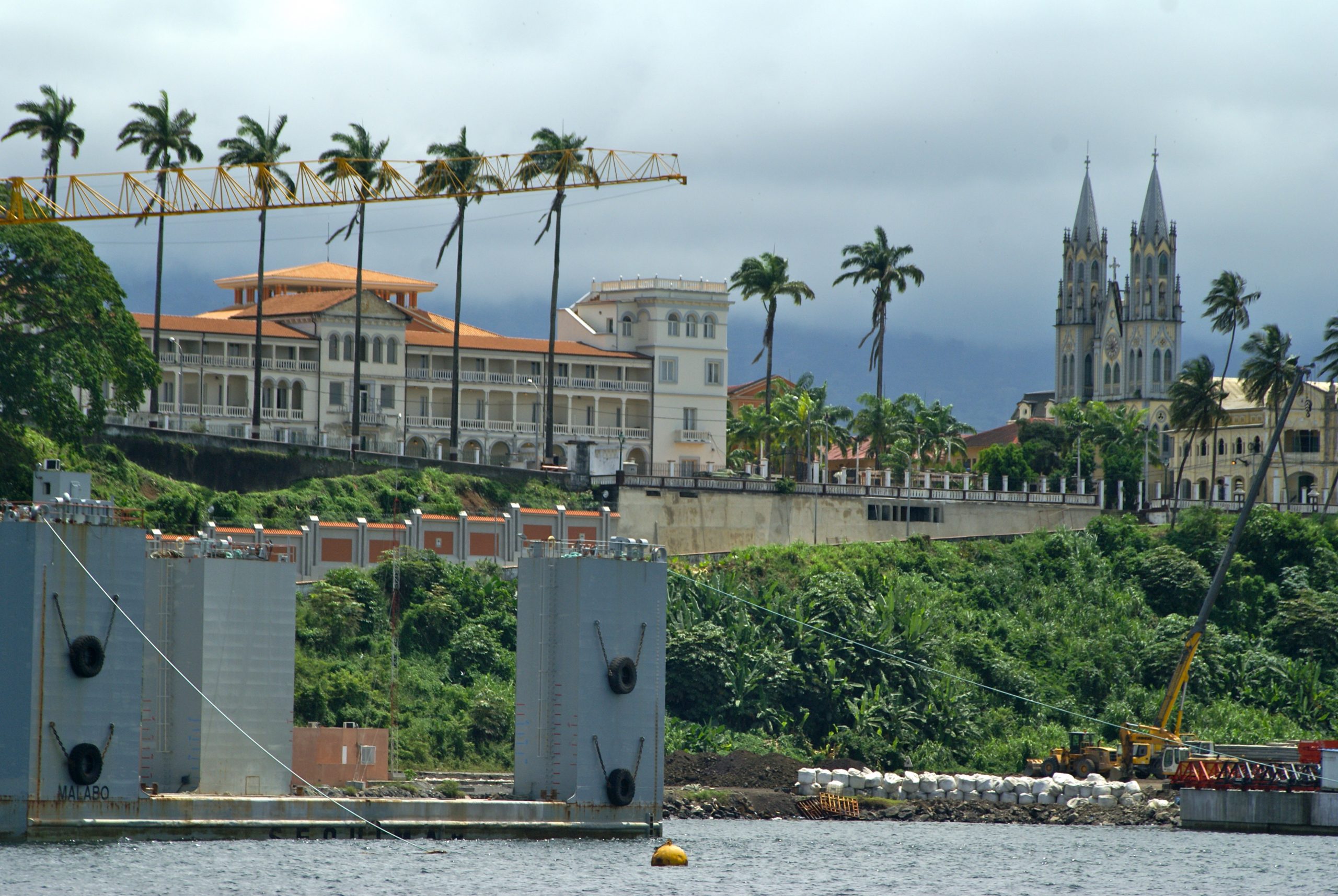
Throughout the 1980s, Obiang resisted the establishment of a multi-party system and even though a democratic constitution was declared in 1991 and the first multi-party legislative elections were held in late 1993, the government’s conduct of the election was such that the main opposition boycotted the poll.
Consequently, the Obiang-controlled Partido Democratico Guinea Ecuatorial (PDGE) won a substantial majority of seats.
This pattern of malpractice has continued more or less unabated at every subsequent election as the Obiang regime routinely identifies real or perceived coup attempts.

Before the discovery of huge oil deposits in the Gulf of Guinea in the mid-1990s, Equatorial Guinea attracted little international attention.
This has changed and although corruption watchdog Transparency International ranks Equatorial Guinea as one of the world’s 12 most-corrupt states, the regime remains an ally of the USA.
Religion in Equatorial Guinea
No official religion, but around 90% are Roman Catholic, with an animist minority.
List of religions
88.7% Christianity
5.0% No religion
4.0% Islam
1.7% Traditional faiths
0.6% Others
Social Conventions in Equatorial Guinea
Foreign visitors (especially Europeans) are a comparative rarity in Equatorial Guinea and are liable to be met with curiosity and, possibly, suspicion. Foreign cigarettes are appreciated as gifts.
A knowledge of Spanish is useful.
Photography: A permit is required from the Ministry of Information and Tourism. Care should be taken when choosing subjects. Photographing the presidential palace, airports, ports, military bases and other sensitive areas could lead to imprisonment.
Languages in Equatorial Guinea
Spanish and French are the official languages. The main African dialects spoken are Fang and Bubi (which is common on Bioko). Other ethnic groups speak their languages too.
Ethnic groups
85.7% Fang
6.5% Bubi
3.6% Ndowe
1.6% Annobon
1.1% Bujeba
1.1% other
Regions and provinces
A. The Insular Region with three Provinces:
1a. The Bioko-Norte Province, Capital Malabo.
1b. The Bioko-Sur Province, Capital Luba.
1c. The Annobón Province, Capital San Antonio de Palé.
B. The Continental Region, with four Provinces:
2a. The Litoral Province, Capital Bata.
2b. The Kie-Ntem Province, Capital Ebebiyín.
2c. The Wele-Nzás Province, Capital Mongomo.
2d. The Centro-Sur Province, Capital Evinayong.

